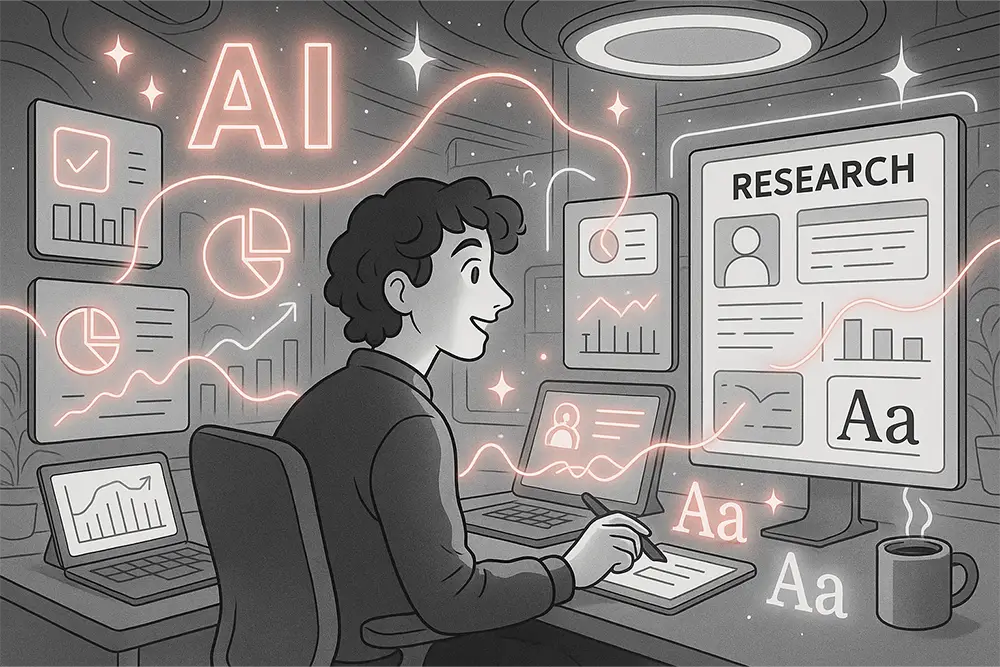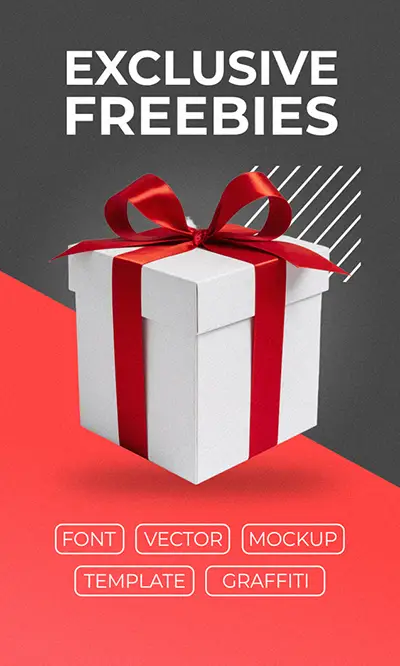
If you’re a designer or freelancer, you don’t just design—you diagnose. The fastest way to a confident proposal is AI client research that turns fuzzy briefs into hard signals: who they are, how they buy, what they value, and where they hang out. In this guide, we’ll walk through seven practical tools you can mix-and-match to build a 360° client intelligence snapshot in under an hour—without feeling like a sales rep. We’ll use AI client research as the throughline so every step pushes your project forward.
Also Read: How to Make Stunning Client Moodboards Using AI (Designer’s Guide)
If you’ve ever wondered why a prospect ghosted after receiving a technically perfect deck, it’s often fit, not quality. Crystal uses DISC-style AI personality insights from public signals (e.g., LinkedIn) so you can adjust tone, structure, and design emphasis. For AI client research, this is your “voice-of-client” translator.
Use it to: Choose messaging hierarchy in your proposal; refine slide tone (“visionary big picture” vs “lean execution details”).
Pro tip: Pair Crystal with a one-page moodboard so your stylistic choices mirror the client’s decision style.
Also Read: Proven AI Client Acquisition Hacks Every Freelancer Must Know
Apollo gives you company + contact enrichment, tech stack hints, and sequences. Even if you don’t run cold outreach, its database is gold for AI client research: headcount changes, funding signals, and role context.
Use it to: Validate whether your “premium rebrand” proposal matches their stage; gather proof points for pricing (growth stage ≠ template budget).
Pro tip: Cross-reference with Similarweb (below) to avoid proposing channel strategies they don’t even use.
You already live on LinkedIn. Layer in AI profile summaries (where available) and Sales Navigator filters to speed up AI client research: org charts, content cadence, and partnerships.
Use it to: Map decision makers and buying committee dynamics; collect language the client uses so headlines sound native to their brand.
Pro tip: Save 3–5 influencer accounts your prospect engages with; this becomes your “taste map” for visuals and copy.
Also Read: AI Tools That Help You Think Better: Boost Your Creative Workflow
Perplexity is an AI research engine that actually cites sources. For designers, it’s the quickest way to turn scattered tabs into a single market narrative.
Use it to: Summarize industry maturity, competitor claims, and recurring customer objections; extract messaging gaps your design can fill.
Pro tip: Ask for “3 differentiators the client can own visually” to translate research directly into layout ideas and typography choices.
Similarweb shows estimated traffic, top pages, and acquisition mix. It’s not strictly an “AI” tool, but it sits at the core of AI client research because it validates what audiences actually do—not what teams say.
Use it to: Align deliverables with growth channels (e.g., if referrals are high, prioritize partner-ready media kits and landing pages).
Pro tip: If paid traffic is heavy, design modular ad variations and request license coverage that fits scale (see licensing CTA below).
SparkToro helps you see where your client’s audience spends time: podcasts, YouTube channels, social accounts, and websites. That’s priceless for AI client research when you’re designing creative that needs to “borrow” native platform aesthetics.
Use it to: Build a “visual vernacular board” from the top channels; your layouts will feel familiar yet fresh—what great branding often is.
Pro tip: Use findings to justify font style (“futuristic techno” for tech-forward audiences vs “modern serif” for luxe DTC).
Clearbit gives you firmographic data and signals (industry, size, tech, hiring). Even at small scale, that clarity makes AI client research actionable: you’ll know whether to design for ABM decks, product pages, or retail packs.
Use it to: Segment deliverables by lifecycle stage; craft different hero sections for enterprise vs SMB landing pages.
Pro tip: Add a slide that visualizes their funnel and where your design unlocks revenue. That’s how proposals close.
Also Read: Design Better Apps: Fonts That Transform Web & Mobile UX
When your AI client research reveals that a client is tech-driven, scaling fast, or selling to early adopters, typography should mirror that energy. These five futuristic picks from Figuree Studio turn research insights into visual impact:
Overmars – Futuristic Techno Font
Best for: Startup branding and app UI.
Why: If your research shows the client’s audience values innovation and speed, Overmars—with its sharp, futuristic strokes—signals momentum and disruption.

Heat Robox – Ultimate Futuristic Font
Best for: Gaming, esports, and bold product launches.
Why: When Similarweb or Apollo reveals heavy paid traffic or entertainment positioning, this bold cybernetic aesthetic matches high-energy markets.

Technos – Futuristic Font
Best for: UI/UX design, SaaS websites, cinematic visuals.
Why: If your AI client research shows a strong digital-first funnel, Technos is versatile enough for both professional dashboards and creative hero sections.

Bigs Robotic – Futuristic Font
Best for: Product mockups, bold headers, industrial tech brands.
Why: If Clearbit data suggests manufacturing, robotics, or hardware focus, Bigs Robotic makes the brand feel sturdy, mechanical, and forward-thinking.

Futrons – Futuristic Display Font
Best for: Space-inspired visuals, dashboards, pitch decks.
Why: When SparkToro shows audiences engage with sci-fi or visionary content, Futrons’ minimal galactic aesthetic connects instantly with that vibe.

Licensing insight: If your client is preparing for global scale—ads, apps, or retail expansions—don’t forget to align typography usage with the right coverage. Point them to the Extended or Corporate License (we provide special discounts for Extended licenses).
Also Read: SaaS Branding Simplified: Fonts That Make Your Tech Startup Look Future-Ready
Design without research is styling. Design with research is strategy. The leverage isn’t in more data; it’s in the shortest path to decisions: what to say, what to show, and what to measure. As a rule, we ask: “What would make this client say ‘this is exactly what we need’ in 5 slides or less?” That question keeps our research scoped, our fonts purposeful, and our visuals tied to business outcomes.
“In a world deluged by irrelevant information, clarity is power.” — Yuval Noah Harari
Translate that to your process: Let AI client research compress noise into a story you can design to—then choose typography that speaks that story instantly.
Q: Won’t this take longer than diving straight into Figma?
A: The 45-minute workflow saves you hours of revision because stakeholders see themselves—accurately—on slide one.
Q: What if the client is small and has little data?
A: Use LinkedIn + SparkToro for adjacent audiences and Perplexity for industry baselines. Your edge is pattern-matching, not dashboards.
Q: How often should I repeat AI client research?
A: Before proposal, pre-kickoff, and after the first sprint. Markets move; keep visuals aligned.
Great design isn’t just beautiful—it’s believable. With focused AI client research, you’ll propose work that feels inevitable: the right story, the right channels, the right fonts. Don’t let research fatigue or guesswork slow you down. Design with clarity, grow with confidence.
Your AI client research sets the strategy—our futuristic fonts bring it to life. Whether you need bold headlines, sleek dashboards, or launch visuals that feel next-gen, these typefaces make clients see the future in your work.
 Funkie Bunny - Joyful Easter Font
$21 – $1,299Price range: $21 through $1,299
Funkie Bunny - Joyful Easter Font
$21 – $1,299Price range: $21 through $1,299 Wood Crack – Decorative Graffiti Font
$21 – $1,299Price range: $21 through $1,299
Wood Crack – Decorative Graffiti Font
$21 – $1,299Price range: $21 through $1,299 Race Freak – The Ultimate Racing Font
$21 – $1,299Price range: $21 through $1,299
Race Freak – The Ultimate Racing Font
$21 – $1,299Price range: $21 through $1,299
Elevate your projects with premium freebies. Fonts, graphics, and templates handpicked for creators like you — download them all today, free forever.
Download Freebies